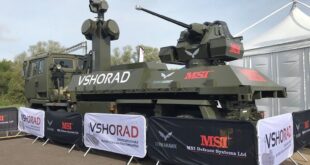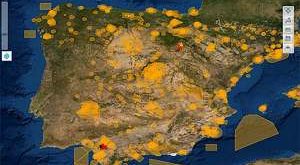By Vaibhav Agrawal
The crucible of war has long been a catalyst for innovation, and in the ongoing conflicts in regions such as Israel and Ukraine, a relentless wave of technological adaptation is unfolding. In these theatres, where life and death play out in stark relief, it is evident that the pace of modern warfare mirrors the agility of a startup ecosystem.
Central to this transformative strategy is the drone, not merely as an airborne device but as a formidable software platform. In recent conflicts, drones have played a pivotal role in shaping the dynamics of warfare, offering a new dimension to both tactical and strategic operations.
Israel-Hamas War:
During the Israel-Hamas conflicts, both sides utilised drones extensively. Israel deployed unmanned aerial vehicles (UAVs) for surveillance, reconnaissance, and targeted airstrikes, enhancing their situational awareness and precision strikes. Hamas, on the other hand, employed drones for reconnaissance purposes and, in some instances, attempted to carry out attacks on Israeli territory.
Ukraine-Russia War:
In the ongoing conflict between Ukraine and Russia, drones have been utilised for reconnaissance and intelligence gathering. Ukrainian forces have employed UAVs to monitor troop movements and assess the battlefield, providing valuable information for strategic decision-making. Drones have also been used for surveillance along the border areas.
Houthi Attacks:
In the conflict involving Houthi rebels in Yemen, the Houthi forces have employed drones for launching attacks on Saudi Arabia. These drone attacks have targeted critical infrastructure, such as airports and oil facilities. The use of drones has allowed the Houthi rebels to extend the reach of their attacks and pose a significant challenge to regional security.
In all these instances, the use of drones has introduced a new level of flexibility, precision, and asymmetry to the conflicts, reshaping traditional notions of warfare and influencing the strategic landscape.
Going Old School!
In 2022, Airbus made waves with a groundbreaking mid-air launch as part of Europe’s Future Combat Air System (FCAS) program, integrating sixth-gen fighter jets with highly automated, expendable drones for various missions. The A400M Atlas played a vital role, dropping up to 50 small or 12 larger Remote Carrier drones close to their targets. Testing involved ejecting a modified Airbus Do-DT25 drone from the A400M, controlled by a pilot before jet engines kicked in for a ground-based remote pilot to take over. Meanwhile, the U.S. Air Force developed the Rapid Dragon system, deploying precision munitions from cargo planes for autonomous or remote-piloted missions.
On the other side of the Atlantic, the United States Air Force was not to be outdone, developing its own method of delivering lethal force using large cargo planes. The Rapid Dragon system, described as a “bomb bay in a box,” featured a pallet filled with precision munitions. This innovative system was deployed from unmodified C-17 or C-130 Hercules transports, descending by parachute. As it floated down, the pallet released its payload, initiating controlled launch sequences for the munitions to embark on autonomous or remote-piloted missions.
In a highly relevant scenario reported in 2020, DARPA achieved a milestone with the first test of a drone designed for swarm deployment and mid-air recovery onto a military aircraft. The system, demonstrated in Utah, saw a military plane releasing drones for specific tasks like surveillance, which then seamlessly returned and docked on a line for retrieval. Despite a successful mid-air launch of the X-61A Gremlin, a parachute malfunction led to an early end. This innovative system aims to extend drone operational range and enhance flexibility, with the added benefit of reusability, aligning with the U.S. military’s commitment to optimising resources and advancing unmanned aerial capabilities, as seen in a similar 2017 test.
Delving into the intricacies of the above events,, a discerning eye might draw a parallel to the historic ‘Zveno Project’ initiated by the Soviets. This pioneering engineering feat, successfully executed in the past, resonates as a relevant and forward-looking step in the contemporary landscape of aerospace management and warfare scenarios of the 21st century, particularly within the dynamic realm of the air domain.
The Zveno Project – A Marvel of its Time!
In the 1930s, Soviet aviation engineer Vladimir Vakhmistrov introduced the groundbreaking Zveno Project, an innovative military aviation concept. Addressing the limitations of fighter aircraft, which had restricted range and payload capacity, the system involved pairing a heavy bomber (Tupolev TB-1 or TB-3) with two to five fighters. This extended the operational reach of fighters, enabling missions beyond their standard range.
In various Zveno variants, fighters either launched alongside the bomber or docked mid-flight, capable of refuelling from the mothership. The Zveno-SPB, a notable version, employed a TB-3 bomber carrying two Polikarpov I-16 fighters, armed with 250 kg bombs each. This strategic system proved effective in combat, notably against targets in Romania during the early German-Soviet War. By transporting fighters over long distances attached to a bomber, fuel was conserved for combat near the target, revolutionising traditional aviation tactics.
The extended range offered by the Zveno Project proved invaluable, especially considering the vast expanse of the Soviet Union and the strategic imperative of projecting air power across expansive territories. This capability allowed for launching fighter attacks from unexpected locations and at greater distances from bases, introducing a novel element of surprise in aerial warfare. The potential to catch enemy forces off guard underscored the tactical advantages brought about by the innovative Zveno system.
Relevant in 21st Century Warfare!?
Fast forward to the present day, does the Zveno concept hold any relevance in the age of drones and motherships?
Instead of manned fighters, today’s “fighters” are autonomous or remotely operated unmanned aerial vehicles (UAVs). While the Zveno Project used heavy bombers as motherships, today’s equivalent could be large transport or surveillance aircraft serving as aerial hubs for deploying and retrieving drones. This concept mirrors current developments, where military powers are exploring the idea of utilising motherships for drone operations.
The Silent Vanguard
The extended range, surprise element, and strategic flexibility introduced by the Zveno Project find resonance in today’s military strategies. The ability to launch drone attacks from unexpected locations, projecting power over vast territories, and catching adversaries off guard remains a valuable tactical advantage.
Modern stealth drones, equipped with advanced materials and design elements, offer a level of invisibility to radar systems, enhancing their ability to operate covertly deep within enemy territory. This stealth capability aligns seamlessly with the element of surprise envisioned in the original Zveno concept.
Force multipliers and cost-efficiency
Taking a cue from the Zveno idea of multiple fighters, the concept of swarm deployment takes centre stage in the contemporary scenario. Imagine one mother drone carrying a fleet of 50 to 60 smaller drones, each with unique capabilities. This swarm approach exponentially increases the potential for mission success, overwhelms enemy defences, and diversifies the range of tasks that can be executed simultaneously.
Equally noteworthy, in the modern military landscape, loitering munitions, also known as suicide drones, play a pivotal role. These autonomous systems can linger over a target area for extended periods, waiting for the opportune moment to strike. Integrating loitering munitions into a Zveno-like system enhances the precision and persistence of the overall operation, offering a dynamic and adaptable approach to engaging targets.
With the integration of stealth drones and autonomous systems, the need for a large contingent of trained pilots diminishes. Autonomous capabilities allow for pre-programmed missions, intelligent decision-making, and adaptive responses to dynamic scenarios. This shift not only streamlines the logistical challenges associated with human resources but also mitigates the extensive training timelines traditionally required for skilled pilots.
The Zveno-inspired concept, leveraging a single mothership carrying a multitude of drones, promotes a modular and standardised approach to drone design and operation. This standardisation allows for interchangeable components and expertise, streamlining maintenance, repair, and operational protocols. With a standardised fleet of drones, training programs become more efficient, as operators can seamlessly transition between different drone models with minimal retraining requirements.
Challenges and Considerations in the Drone-Zveno Era
The Zveno concept relied on physical docking and mid-air refuelling, which may not be directly translatable to drone operations. Technological advancements, including autonomous aerial refuelling for drones, would be essential for realising the full potential of a modern Zveno-like system.
Operating a swarm of drones introduces a complex web of communication and coordination challenges. Ensuring seamless interaction among multiple autonomous systems demands advanced communication protocols and artificial intelligence algorithms. Overcoming potential signal interference, maintaining real-time connectivity, and avoiding collisions within the swarm are critical hurdles that require meticulous technological solutions.
As drones become more interconnected and reliant on digital systems, the vulnerability to cyber threats escalates. Ensuring the security of communication channels, protecting sensitive data, and safeguarding against cyberattacks become paramount.
Managing the maintenance and sustainability of a fleet of drones presents logistical challenges. The modular design of drone systems within the Zveno concept facilitates maintenance to some extent, but the operational lifespan and environmental impact of widespread drone deployment require careful consideration. Sustainable practices, recycling, and disposal protocols must align with evolving environmental standards.
In the age of drone warfare, the Zveno Project concept presents a captivating intersection of history and innovation. While the specifics may require adaptation to align with contemporary technologies, the fundamental principles of extending operational reach, surprise, and strategic flexibility continue to hold relevance. The Zveno concept, if reimagined and updated for the 21st century, could potentially contribute to reshaping the dynamics of modern aerial warfare.
The Author is Editor of Business Upturn Asia and has a keen focus on Space and Defence Affairs. He can be reached at [email protected] & he tweets @VaibhavMAG
Disclaimer: Views expressed are personal and do not reflect the official position or policy of Financial Express Online. Reproducing this content without permission is prohibited.
 Unmanned Aerial Vehicle The latest drone news
Unmanned Aerial Vehicle The latest drone news



